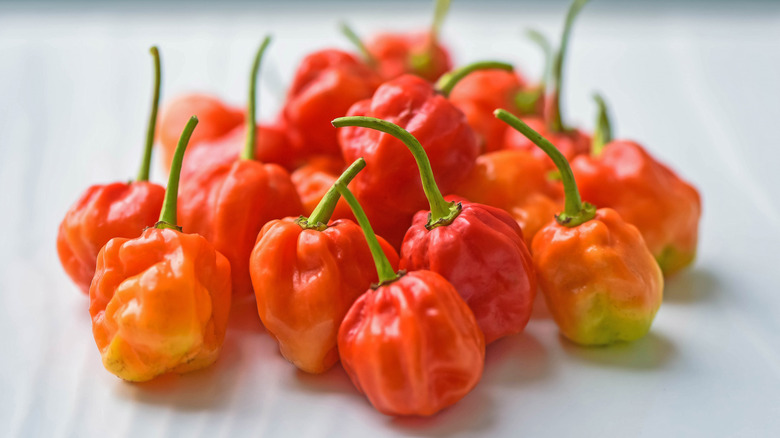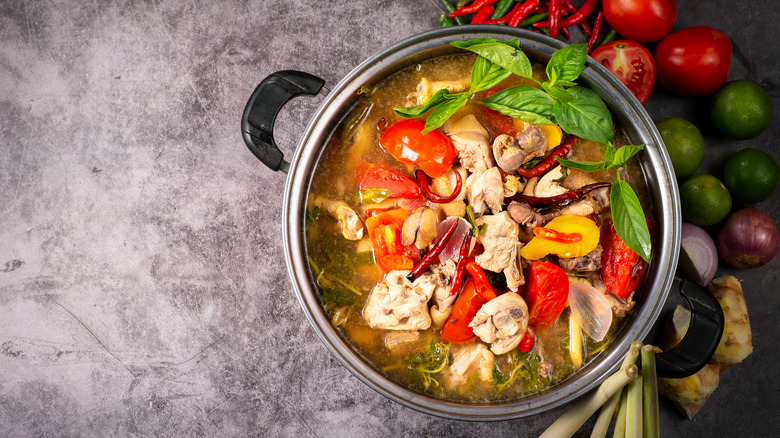What To Know Before Adding Scotch Bonnet Peppers To Chicken Soup
We may receive a commission on purchases made from links.
Chicken soup is a comfort food, a restorative elixir, and has its rightful place in nearly every food culture across the globe. In the Caribbean and West Africa, chicken soup is often infused with the ubiquitous Scotch bonnet pepper, which, in addition to its smoky, fruity flavor, is believed to contain medicinal properties that can treat everything from headaches to arthritis. Also known in Jamaica as bonney pepper, Scotch bonnet is a small, squat pepper that resembles a wrinkly baby bell pepper. It's widely used in all types of Caribbean recipes due to its sweet and fruity flavor and vibrant color. Jamaican chicken soup and African pepper soup are two Caribbean recipes that use Scotch bonnet peppers almost exclusively to enhance the flavor of the broth.
What we know about the Scotch bonnet is that it's got more than the average kick. Scotch bonnets bring the addition of a deeper flavor and a palatable level of heat, but adding chopped Scotch bonnet pepper could result in that intolerable can't-feel-your-lips kind of hot. Clocking in at 100,000 to 350,000 on the Scoville heat scale, it's a formidable enough pepper to treat carefully. While the peppers are often assumed to be the hottest of the hot, on the Scoville scale Scotch bonnets are actually somewhere in the middle, running a close race with habaneros. That's still an intense heat, so if you're making a chicken soup with a Caribbean or African essence, you'll want to first try adding Scotch bonnet whole.
How to use Scotch bonnet and curb the heat
Typical Caribbean chicken soup recipes will call for the addition of one whole Scotch bonnet pepper, but the important thing is to constantly taste the soup as you cook. If you feel that one isn't too much heat, you can try adding one to two more. Taste your soup every 10 minutes and stir it frequently. Don't get overzealous: Stirring the soup too quickly or with too much gusto can cause the pepper to burst. Another way to avoid a busted Scotch bonnet is to remove it once you observe it becoming soft. If you're afraid to risk an exploded pepper, there are a few other ways to add the Scotch bonnet to your chicken soup.
Dried Scotch bonnet peppers are widely available and can be easily added to soup. You can place them whole into the soup, but use the same rule of thumb as with a fresh pepper, and don't overwork them when stirring. Because the peppers are already dried, they will fall apart sooner than fresh pepper, so will need to be watched carefully and removed sooner. You can also grind dried Scotch bonnets into flakes. Remember, these will be hotter than your common store-bought red pepper flakes, so be judicious. Another method is to core and seed the pepper itself. It's a great way to eliminate some of the heat while retaining the flavor. Don't forget to use gloves and avoid touching your eyes.

